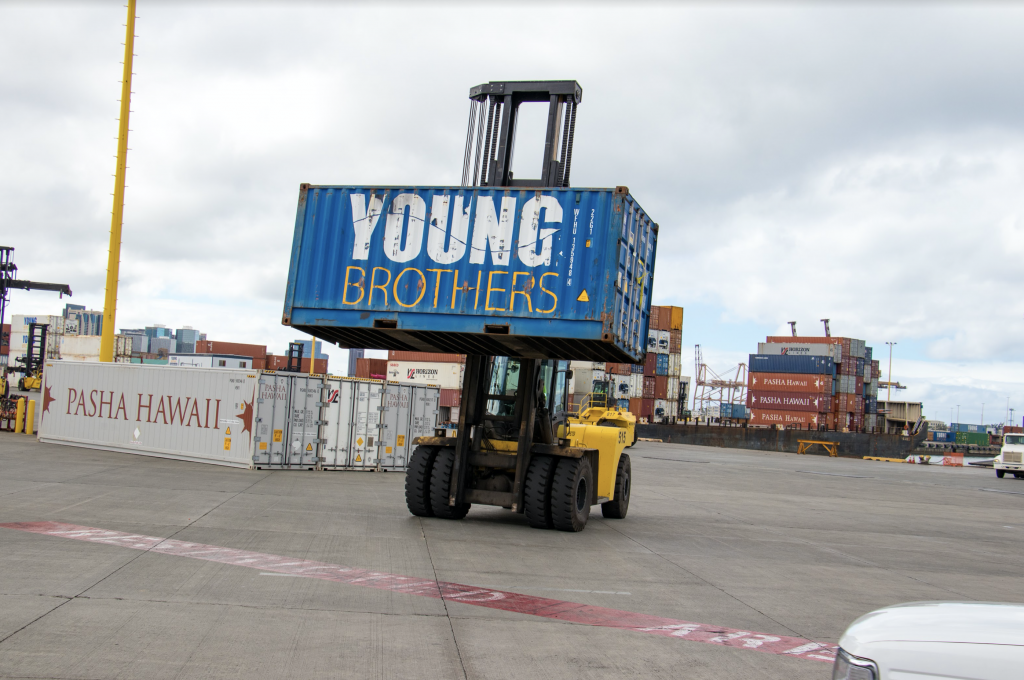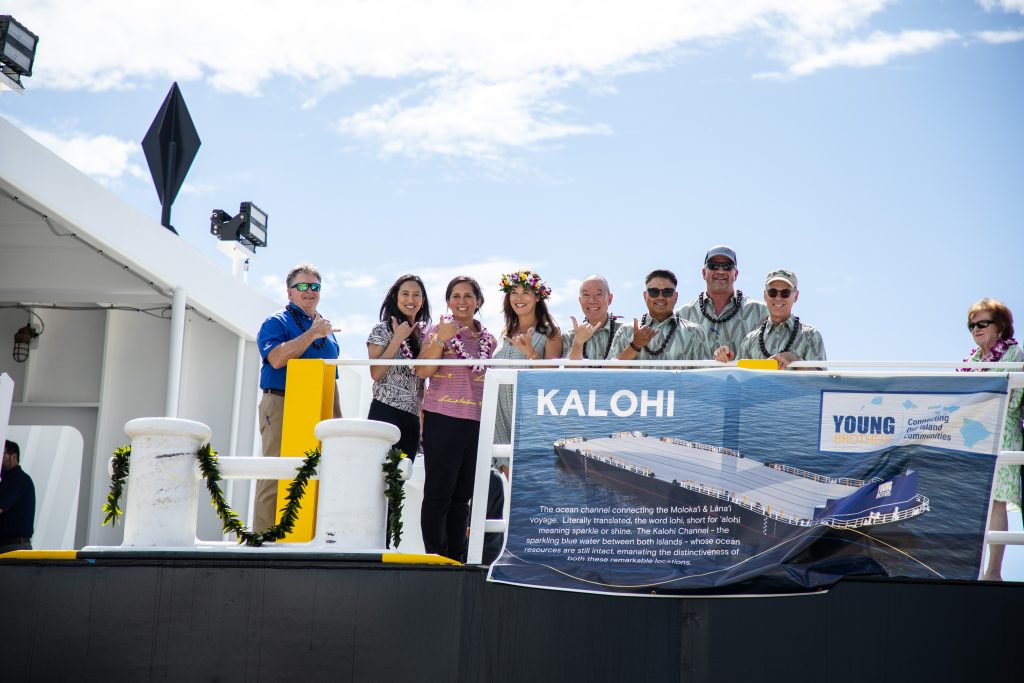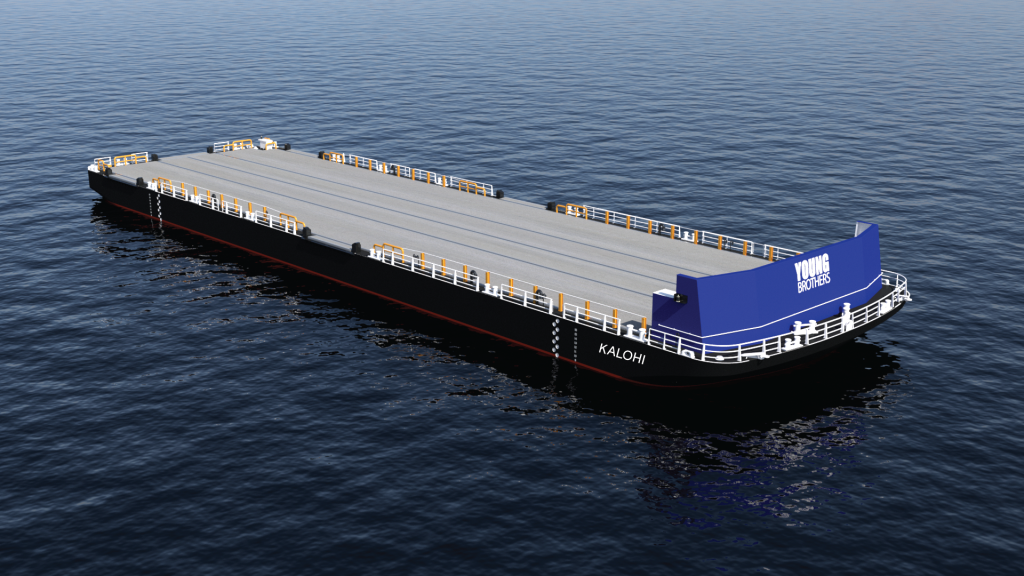Young Brothers seeks 20% rate hike on majority of cargo

Shipping company Young Brothers is seeking a 20% rate hike on the majority of cargo, which would equate to a $26.3 million increase in revenue, to cover significant spikes in service costs, support critical investments in equipment and infrastructure upgrades and sustain vital interisland services.
“This necessary realignment of rates will put Young Brothers on a more sustainable path for the future, ensuring we can continue providing the vital service our customers and communities depend on and build a more resilient company that can adapt to future needs and challenges,” said Young Brothers President Jay Ana in a recent company update.
If approved by the Hawai‘i Public Utilities Commission, rates for the majority of cargo Young Brothers ships to neighbor island ports would increase by an average of about 3.7% per year since its last rate increase, slightly less than overall inflation during that same period, according to company officials.
For more efficient service lines requiring less cargo handling, rates would increase by 20% to 35%. Services requiring additional or special handling will increase by 35% to 45%.
Examples include:
- Cost to ship a container would go up 20%, with the exception of containers shipped to and from Hilo, which would increase 35%.
- Price to ship a car and roll-on-roll-off cargo would increase 30%.
- Palletized cargo rates would increase 30% for dry and 40% for refrigerated freight.
- Less-than-container-load would increase 35% and less-than-pallet rates would go up 45%.
The need for additional revenue is driven by substantial hikes in expenses, cargo volume that continues to lag behind pre-COVID-19 pandemic levels and strategic investments in fleet modernization and harbor infrastructure to ensure reliable service:
- Operating expenses increased by 17% since 2020, driven by inflation and higher labor costs, including a $10 million annual hike in wages and benefits after the ratification of new collective bargaining agreements in 2024.
- Higher capital costs for investments in new barges and tugs, customer equipment, vehicles in the shoreside fleet and harbor infrastructure enhancements to more safely, reliably and sustainably deliver services to customers.
- Cargo volume remained down by 8% in 2023 compared with 2019 and an average of 13% from 2019 to 2023.

“Like many local companies, we are continuing to navigate challenging business conditions, with inflationary pressure pushing up our operating expenses and higher capital costs for critically-needed investments to maintain the reliability of our service for every community we serve,” said Ana.
Between September 2020 and December 2024, Young Brothers will have invested more than $120 million in utility infrastructure to improve the safety, reliability and efficiency of service.
New vessels include two Mount-class tugs and the new Kalohi and Nāulu barges, totaling $74 million.
However, those investments cannot be recovered unless and until the state Public Utilities Commision approves the shipping company’s 2025 rate request and new rates go into effect.
Additional investments included:
- $8 million in new containers, reefers, chassis, platforms and flat racks for customers to ship their cargo.
- $14 million for new electric vehicles and freight handling equipment in the shoreside fleet.
- More than $1.5 million to upgrade Lāna‘i harbor mooring system infrastructure.

The state Public Utilites Commision in June approved a new way of calculating the shipping company’s costs and customer rates, factoring in port location and type of cargo to more accurately capture the cost of transporting it to its destination.
Current rates generally treat cargo types and routes the same, even if that service requires significantly more labor or is a longer voyage. The approach ensures the true cost of selected services and routes are better allocated to corresponding customers.
“Young Brothers has been impacted by the delayed recovery of investments to improve service, making it more difficult to attract capital at reasonable rates,” said Ana. “Young Brothers needs timely and adequate rate relief to recover the true cost of service and continue fulfilling its role as a critical lifeline for Hawai‘i’s commerce and communities.”
Regulatory lag is the delay between when a utility spends money to provide services and when expenses are recovered through customer rates.
An example of such a delay is the $80 million investment Young Brothers made in the Kāpena–class tugboats. Current customer rates cover $20 million, the cost of just one of the four vessels that have served the islands since 2018.
The Young Brothers rate increase request starts a comprehensive review of rates for 2025 by the state Public Utilities Commission.
Public meetings are expected in January next year on the Big Island, O‘ahu, Kaua‘i, Maui, Moloka‘i and Lāna‘i. If approved, new rates would go into effect next summer.
Additional information is available on the Young Brothers website.
Sponsored Content
Comments














